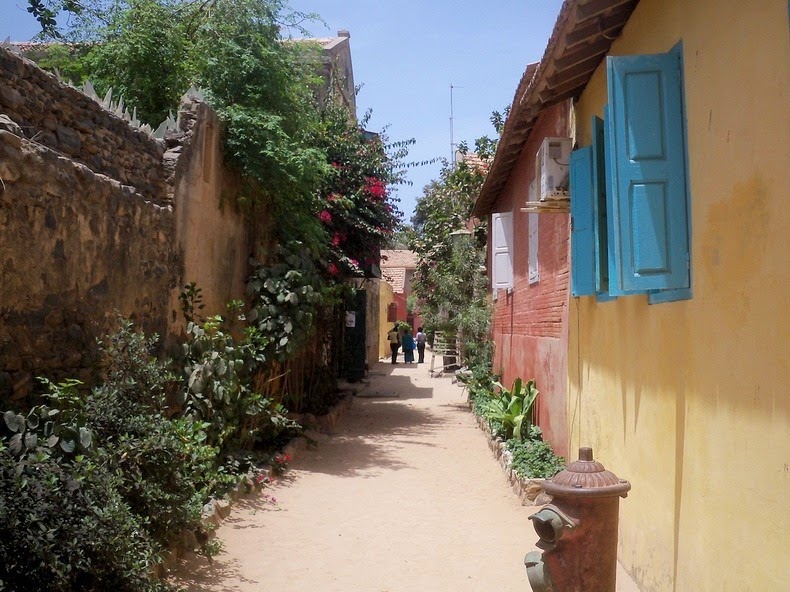Gorée is a small island located off the coast of Dakar, in Senegal, about 2 km out into the sea. It was the site of one of the earliest European settlements in Western Africa and long served as an outpost for slave trading. Reportedly, the island’s tiny size (only 45 acres) made it easy for merchants to control their captives and the surrounding waters are so deep that any escape attempt would ensure death by drowning. Millions of slaves are purported to have passed through the island on their way to work to America, although recent scholars dispute the numbers. Today, the island with some 1,300 inhabitants is so tranquil that there are no cars, no modern buildings and no crime, and those who visit Goree are said to behave more like pilgrims visiting a holy shrine than as tourists.
A statue at the Maison des Esclaves (House of Slaves) Memorial. Photo credit
The first settlers of Gorée Island were Portuguese sailors who arrived on the island in 1444. The Dutch captured the island in 1588, and for the next two centuries Gorée frequently changed hands between the Dutch, British and French. In 1817, France took control of the island and held it until Senegal’s independence in 1960.
Between 1536 and 1848, the island was active in the Atlantic slave trade. Slave trading was conducted on the “House of Slaves”, built by the Dutch in 1776 – one of the many slave houses and the last surviving one in Goree. At one point, the island used to have 28 slave houses, according to one tour guide’s version as told to CNN. However, historians debate whether Gorée was a major entrepot for the trade or simply one of many centers from which Africans were taken to the Americas. Mostly, researchers disagree on the number of slaves purported to have passed through the island. They argue that the size of the island does not warrant the “millions” of slaves, the often quoted figure, attributed to have passed through the island. According to the skeptics, only 26,000 enslaved Africans were recorded to have departed from Goree for transportation to the Americas, amounting to no more than a few hundred slaves per year. These scholars believe that the island and its “House of Slaves” have been talked up by those interested in making a few dollars off gullible tourists.
Regardless of the number, slaves did indeed pass through the island and “House of Slaves”, which was turned into a museum in 1962, is still a major draw for foreign tourists to Senegal.
A wall in the Museum: a mural depicting slaves being herded in the African bush by Europeans. Photo credit
The House of Slaves was where African slaves were kept captive until they could be sold. On the ground floor of the house were cells measuring 2.6 meter by 2.6 meter where male slaves were housed, 15-20 slaves in each cell. Cells for women and children were located in a different part of the house. Young girls were often kept separately for sale or the pleasure of the traders. Seated with their backs against the wall, chained around the neck and arms, the prisoners would usually have to wait in the room for about three months. Once a day, they were fed and allowed to attend to their needs. The conditions were so appalling and unsanitary that diseases were rampant.
After the waiting period, the slaves would be taken out of the cells for trade and gathered in the courtyard in the middle of the house. The buyers and traders would lean over the balcony overlooking the courtyard and observe the slaves while negotiating prices.
Located at the very back of the house, facing the Atlantic Ocean, is the so called “door of no return” through which sold slaves would be taken out and into a waiting ship to be taken across the ocean, never to return to their homes.
Goree island was designated a UNESCO World Heritage site in 1978. This site is visited by approximately 200,000 visitors each year. Several world leaders including Pope John Paul II, George Bush, Barack Obama and Nelson Mandela have made stops here.
The House of Slaves. Photo credit
The Door of No Return. Photo credit

Sources: UNESCO / Wikipedia / Britannica / About / BBC






















Slavery is such a sickening thing. The thought of owning another human soul is so wrong.
ReplyDelete